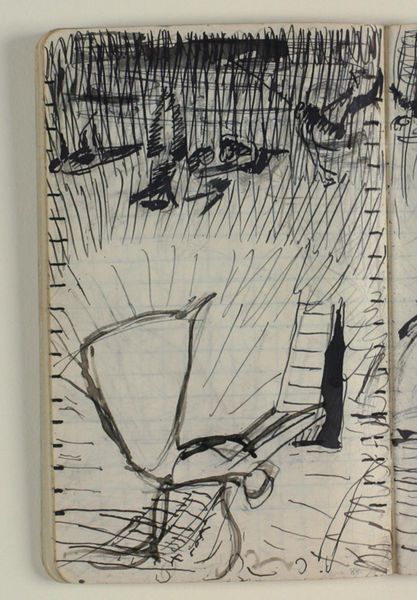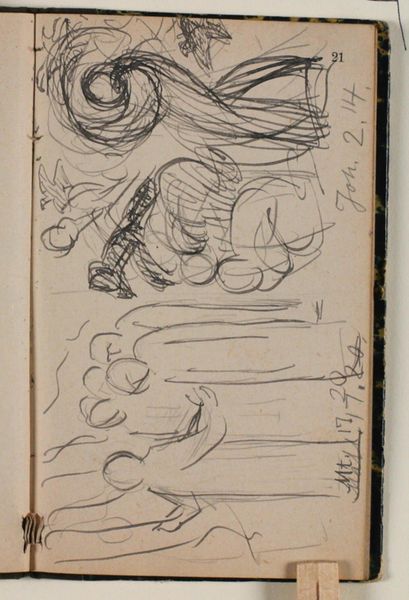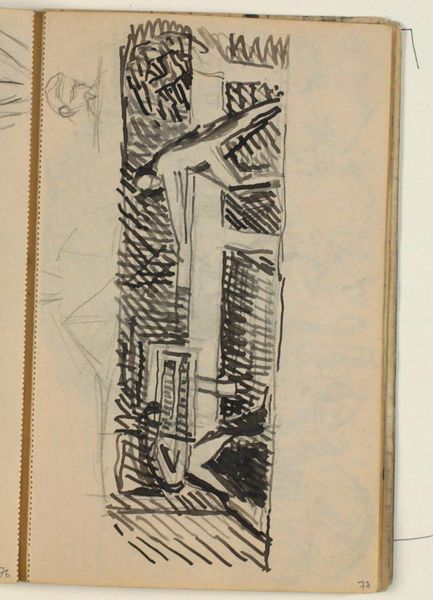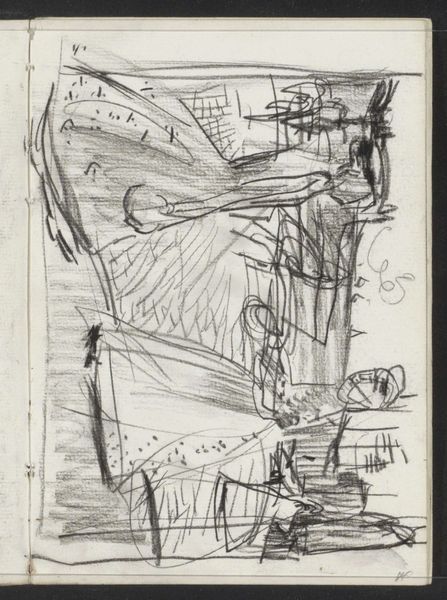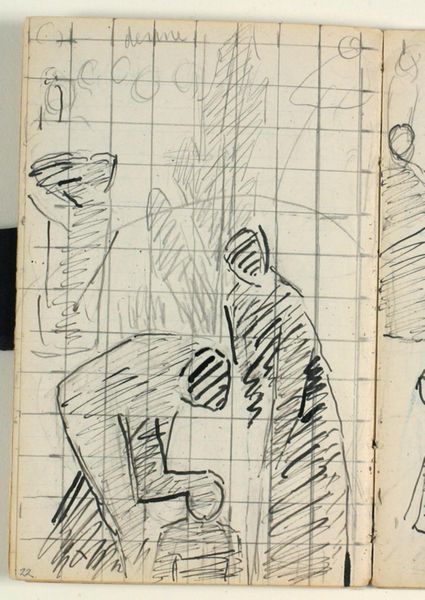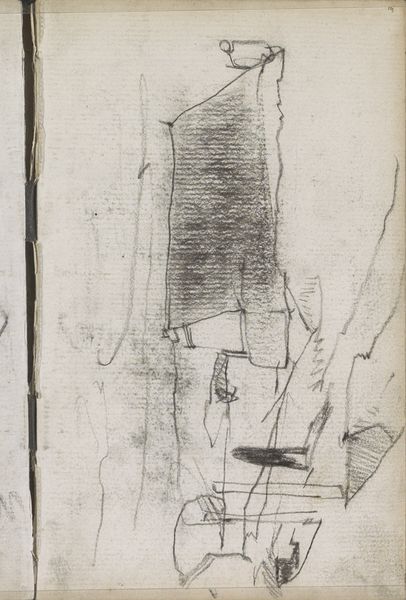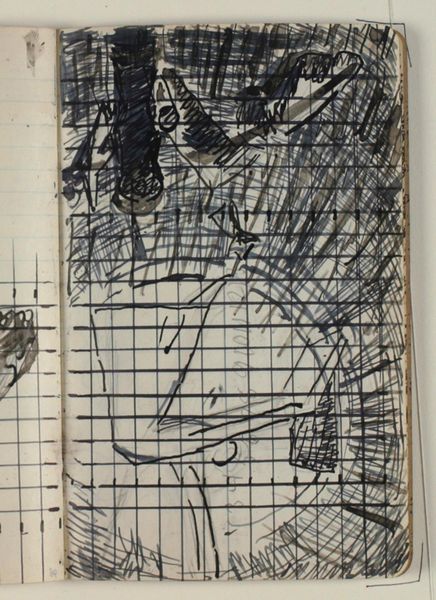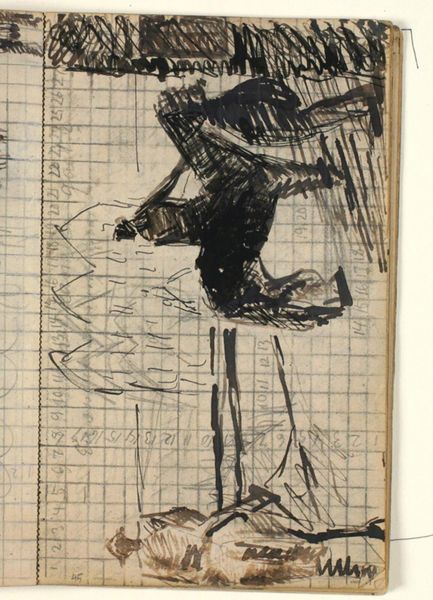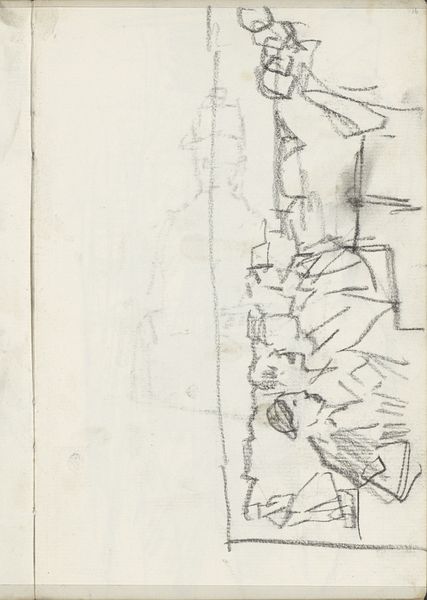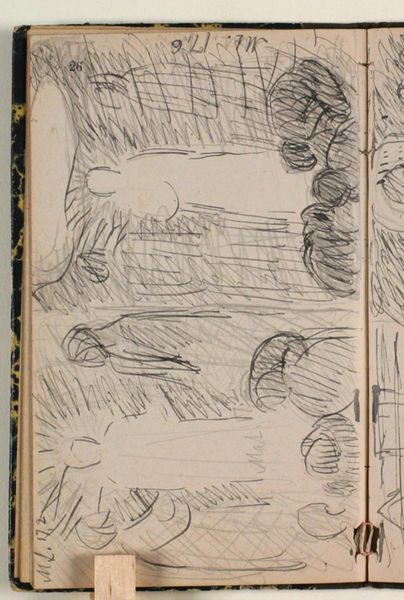
drawing, ink, pen
#
drawing
#
pen sketch
#
landscape
#
ink
#
geometric
#
line
#
pen
Dimensions: 175 mm (height) x 109 mm (width) (monteringsmaal), 175 mm (height) x 109 mm (width) (bladmaal)
Editor: Here we have Niels Larsen Stevns’s pen and ink drawing, "Engle vælter stenen fra graven," which translates to "Angel Rolling Away the Stone from the Grave," created between 1933 and 1934. It feels so gestural and raw, capturing this sense of drama in just a few lines. How do you interpret this work, particularly considering its historical context? Curator: Well, considering the time frame, it’s impossible to ignore the rising tensions in Europe leading up to World War II. The image of an angel overturning a stone – a symbol of liberation, of course – can be seen as a powerful visual metaphor for the desire for freedom and a new beginning amidst impending global conflict. Editor: That’s fascinating! I was mostly focusing on the biblical narrative, but viewing it through a socio-political lens really shifts my perspective. Do you think the rapid, almost frantic lines contribute to that sense of urgency? Curator: Absolutely. Stevns's stylistic choices, specifically the linework, amplify that message. The stark contrast and dynamic lines also draw upon expressionist traditions to heighten emotional impact, prompting us to consider art's purpose and role within a society nearing total war. What do you make of the landscapes in contrast to the linear style? Editor: That's interesting to bring up. To me, the abstract lines that seem to shape the landscape adds to the chaotic but hopeful emotions of the scene. This feels like a call for new perspectives. Curator: I agree completely. Perhaps reflecting Stevns’s own desire for change? Considering what we've discussed, it emphasizes how social forces can shape, not just influence, art. Editor: Exactly! Thanks, I’ll never look at this the same way. Curator: My pleasure. Thinking about this piece shows how historical understanding enriches the experience.
Comments
No comments
Be the first to comment and join the conversation on the ultimate creative platform.
